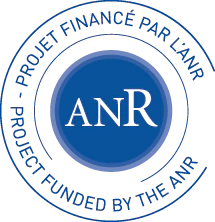ANR AgileNeuRobot (2021/2025)


Fiche d’identité
- Acronyme : AgileNeuRobot (ANR-20-CE23-0021)
- Titre : Robots aériens agiles bio-mimetiques pour le vol en conditions réelles
- Title : Bio-mimetic agile aerial robots flying in real-life conditions
- CES : CE23 - Intelligence Artificielle / Instrument de financement : Projet de recherche collaborative (PRC) / Catégorie R&D : Recherche fondamentale
- Coordinateur Scientifique : PERRINET Laurent (UMR7289)
- Durée: 4 ans, à partir du 1er mars 2021 - 1er décembre 2025
- Budget total: 435 k€
- Responsables Scientifiques : Stéphane Viollet (BioRobotique, Inst Sciences Mouvement), Ryad Benosman (Inst de la Vision ) | Laurent Perrinet (NeOpTo, Inst Neurosciences de la Timone, coordinateur)

Résumé
Des robots aériens autonomes seraient des outils essentiels dans les opérations de recherche et de sauvetage. Toutefois, voler dans des environnements complexes exige un haut niveau d’agilité, ce qui implique par exemple la capacité de déclencher des manœuvres agressives pour esquiver les obstacles: Les caméras et algorithmes d’intelligence artificielle conventionnels n’ont pas ces capacités. Dans ce projet, nous proposerons une solution associant de manière bio-inspirée une dynamique rapide de détection visuelle et de stabilisation. Nous intégrerons ces différents aspects dans un système neuromorphique événementiel de bout en bout. La clé de cette approche est l’optimisation des délais du système par traitement prédictif. Ceci permettra de voler indépendamment, sans aucune intervention de l’utilisateur. Notre objectif à plus long terme est de satisfaire ces besoins avec un minimum d’énergie et de fournir des solutions novatrices aux défis des algorithmes traditionnels d’IA.

Abstract
Autonomous aerial robots would be essential tools in search and rescue operations. But flying in complex environments requires a high level of agility, which implies the ability to initiate aggressive maneuvers to avoid obstacles: Conventional AI cameras and algorithms do not have these capabilities. In this project, we propose a solution that will integrate bio-inspired rapid visual detection and stabilization dynamics into an end-to-end event based neuromorphic system. The key to this approach will be the optimization of delays through predictive processing. This will allow these robots to fly independently, without any user intervention. Our longer-term goal is to meet the requirements with very little power and provide innovative solutions to the challenges of traditional AI algorithms.
Acknowledgement
This work was supported by ANR project “AgileNeuRobot” N° ANR-20-CE23-0021.